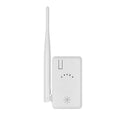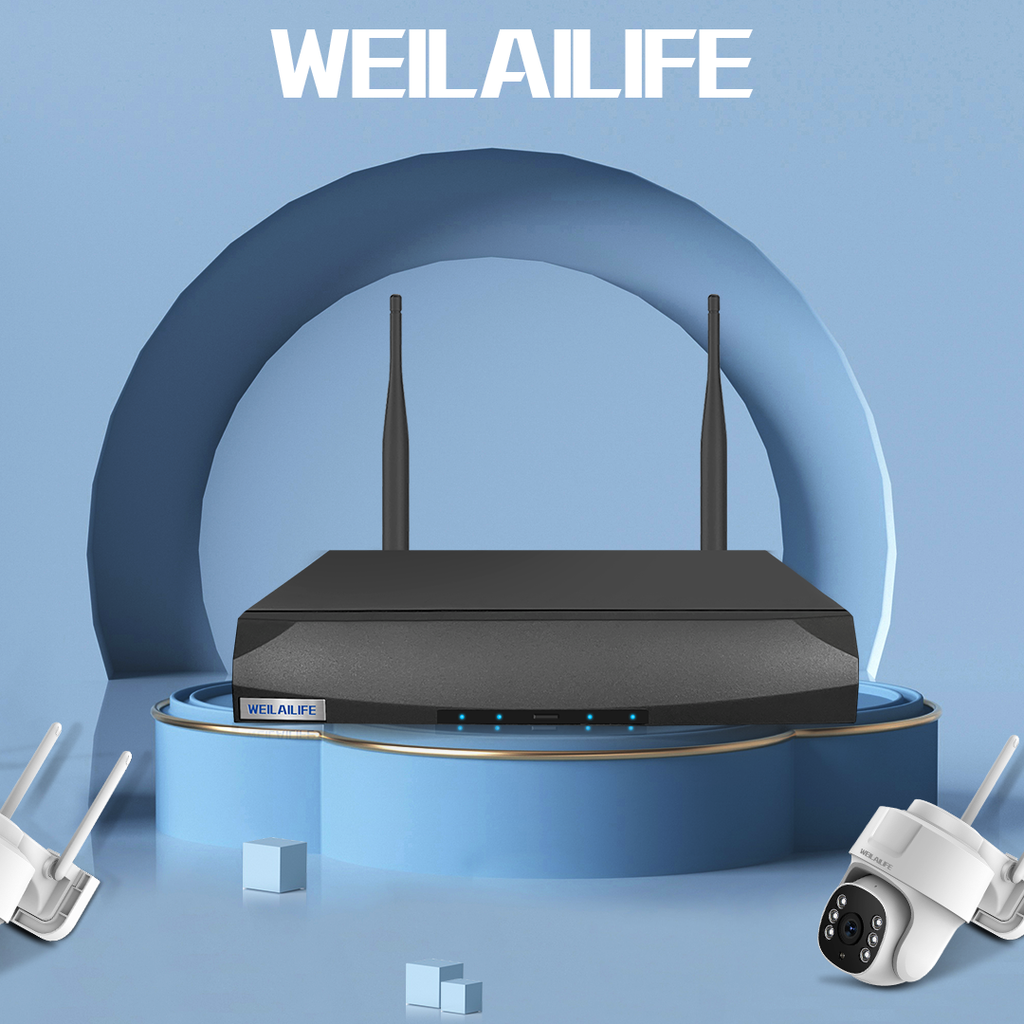Comprehensive Guide to Home Surveillance Cameras
Introduction:
Welcome to the WEILAILIFE brand's comprehensive guide to home surveillance cameras. In this article, we will explore various types of home surveillance cameras and their features to help you make an informed decision for your security needs.
Types of Home Surveillance Cameras based on Appearance:
There are several types of surveillance cameras based on their appearance, including bullet cameras, dome cameras, turret cameras, and PTZ (Pan-Tilt-Zoom) cameras.
Bullet Cameras: These cameras have a rectangular or cylindrical shape and are commonly used for fixed monitoring positions. They offer high waterproof ratings and flexible focal length options, making them suitable for outdoor locations with varying lighting conditions.
Dome Cameras: Dome cameras have a rounded shape and often integrate various functionalities, such as cameras, zoom lenses, PTZ capabilities, and protective housings. They are ideal for monitoring wide open areas.
Turret Cameras: Also known as mini dome cameras, turret cameras have a compact and aesthetic design. They are commonly used in office areas, hallways, elevators, and other fixed positions.
PTZ Cameras: These cameras come with a pan-tilt-zoom mechanism, allowing them to rotate horizontally and vertically, providing extensive coverage. Some advanced PTZ cameras even feature automatic tracking capabilities.
Currently, for home use, PTZ dome cameras are popular due to their ease of installation, flexible placement options, and versatile control features. There are also specialized combinations like turret PTZ cameras or fisheye and card cameras, catering to specific needs.
Types of Home Surveillance Cameras based on Power Supply:
Home surveillance cameras can be powered by different methods, including mains power supply, Power over Ethernet (PoE), battery, and solar power.
Mains Power Supply: Traditional and widely used, these cameras are connected to a 220V power source using a 12V/24V power adapter. They are cost-effective but may lead to inconvenience and aesthetic issues in some cases.
Power over Ethernet (PoE): PoE cameras are powered and transmit data through a single Ethernet cable. They can support longer transmission distances and are suitable for multiple cameras or extended monitoring requirements. However, they require a PoE switch or PoE NVR, which may add to the overall cost.
Battery and Solar Power: Cameras powered by batteries or solar panels are easy to install as they don't require wiring. However, they are relatively expensive and less stable, making them more suitable for temporary or outdoor surveillance needs.
Types of Home Surveillance Cameras based on Network Connectivity:
Home surveillance cameras can be connected via Ethernet, Wi-Fi, or cellular networks.
Wi-Fi: Cameras with Wi-Fi connectivity offer easy setup without the need for wiring. However, they are limited by the coverage range of the router and are susceptible to interference.
Ethernet: Cameras connected through Ethernet cables provide more stable and reliable network connections, with transmission distances of up to 100 meters. However, they require additional wiring and may not be as aesthetically pleasing.
Cellular Networks: Cameras using cellular networks (3G/4G) do not rely on Wi-Fi or wired connections. They are simple to set up and can be remotely accessed, but the use of cellular data may incur additional costs.
Currently, most mainstream home surveillance cameras support Wi-Fi connectivity, and some models even offer direct connection options through built-in Wi-Fi hotspots for offline viewing.
Types of Home Surveillance Cameras based on Storage:
Home surveillance cameras offer various storage options, including memory cards, NVR storage, and cloud storage.
Memory Cards: Commonly Micro SD or TF cards, these provide local video recording directly on the camera. They are easy to use and cost-effective. However, they are susceptible to tampering, and limited storage capacity may restrict long-term video recording.
NVR Storage: Network Video Recorders (NVRs) receive and store video data from cameras over the network. They support multiple camera connections and offer high-capacity, long-term, high-definition recording. They are suitable for locations with centralized monitoring needs, such as shops, supermarkets, offices, factories, and villas.
Cloud Storage: Cloud storage is a service provided by security vendors, offering secure and reliable remote storage for video recordings. It ensures data integrity and accessibility for post-investigation and evidence retrieval. However, it involves ongoing subscription costs based on the storage period and varies among different vendors.
Conclusion:
In conclusion, selecting the right home surveillance camera involves considering various factors such as camera type, power supply, network connectivity, and storage options. It is essential to assess your specific requirements and budget before making a decision. With the WEILAILIFE brand's range of advanced surveillance solutions, you can find the perfect camera system to ensure the safety and security of your home.
Welcome to the WEILAILIFE brand's comprehensive guide to home surveillance cameras. In this article, we will explore various types of home surveillance cameras and their features to help you make an informed decision for your security needs.
Types of Home Surveillance Cameras based on Appearance:
There are several types of surveillance cameras based on their appearance, including bullet cameras, dome cameras, turret cameras, and PTZ (Pan-Tilt-Zoom) cameras.
Bullet Cameras: These cameras have a rectangular or cylindrical shape and are commonly used for fixed monitoring positions. They offer high waterproof ratings and flexible focal length options, making them suitable for outdoor locations with varying lighting conditions.
Dome Cameras: Dome cameras have a rounded shape and often integrate various functionalities, such as cameras, zoom lenses, PTZ capabilities, and protective housings. They are ideal for monitoring wide open areas.
Turret Cameras: Also known as mini dome cameras, turret cameras have a compact and aesthetic design. They are commonly used in office areas, hallways, elevators, and other fixed positions.
PTZ Cameras: These cameras come with a pan-tilt-zoom mechanism, allowing them to rotate horizontally and vertically, providing extensive coverage. Some advanced PTZ cameras even feature automatic tracking capabilities.
Currently, for home use, PTZ dome cameras are popular due to their ease of installation, flexible placement options, and versatile control features. There are also specialized combinations like turret PTZ cameras or fisheye and card cameras, catering to specific needs.
Types of Home Surveillance Cameras based on Power Supply:
Home surveillance cameras can be powered by different methods, including mains power supply, Power over Ethernet (PoE), battery, and solar power.
Mains Power Supply: Traditional and widely used, these cameras are connected to a 220V power source using a 12V/24V power adapter. They are cost-effective but may lead to inconvenience and aesthetic issues in some cases.
Power over Ethernet (PoE): PoE cameras are powered and transmit data through a single Ethernet cable. They can support longer transmission distances and are suitable for multiple cameras or extended monitoring requirements. However, they require a PoE switch or PoE NVR, which may add to the overall cost.
Battery and Solar Power: Cameras powered by batteries or solar panels are easy to install as they don't require wiring. However, they are relatively expensive and less stable, making them more suitable for temporary or outdoor surveillance needs.
Types of Home Surveillance Cameras based on Network Connectivity:
Home surveillance cameras can be connected via Ethernet, Wi-Fi, or cellular networks.
Wi-Fi: Cameras with Wi-Fi connectivity offer easy setup without the need for wiring. However, they are limited by the coverage range of the router and are susceptible to interference.
Ethernet: Cameras connected through Ethernet cables provide more stable and reliable network connections, with transmission distances of up to 100 meters. However, they require additional wiring and may not be as aesthetically pleasing.
Cellular Networks: Cameras using cellular networks (3G/4G) do not rely on Wi-Fi or wired connections. They are simple to set up and can be remotely accessed, but the use of cellular data may incur additional costs.
Currently, most mainstream home surveillance cameras support Wi-Fi connectivity, and some models even offer direct connection options through built-in Wi-Fi hotspots for offline viewing.
Types of Home Surveillance Cameras based on Storage:
Home surveillance cameras offer various storage options, including memory cards, NVR storage, and cloud storage.
Memory Cards: Commonly Micro SD or TF cards, these provide local video recording directly on the camera. They are easy to use and cost-effective. However, they are susceptible to tampering, and limited storage capacity may restrict long-term video recording.
NVR Storage: Network Video Recorders (NVRs) receive and store video data from cameras over the network. They support multiple camera connections and offer high-capacity, long-term, high-definition recording. They are suitable for locations with centralized monitoring needs, such as shops, supermarkets, offices, factories, and villas.
Cloud Storage: Cloud storage is a service provided by security vendors, offering secure and reliable remote storage for video recordings. It ensures data integrity and accessibility for post-investigation and evidence retrieval. However, it involves ongoing subscription costs based on the storage period and varies among different vendors.
Conclusion:
In conclusion, selecting the right home surveillance camera involves considering various factors such as camera type, power supply, network connectivity, and storage options. It is essential to assess your specific requirements and budget before making a decision. With the WEILAILIFE brand's range of advanced surveillance solutions, you can find the perfect camera system to ensure the safety and security of your home.
Sample Block Quote
Nam tempus turpis at metus scelerisque placerat nulla deumantos sollicitudin delos felis. Pellentesque diam dolor an elementum et lobortis at mollis ut risus. Curabitur semper sagittis mino de condimentum.
Sample Paragraph Text
Lorem ipsum dolor sit amet, consectetur adipiscing elit. Morbi ut blandit risus. Donec mollis nec tellus et rutrum. Orci varius natoque de penatibus et magnis dis parturient montes, nascetur ridiculus mus. Ut consequat quam a purus faucibus scelerisque. Mauris ac dui ante. Pellentesque congue porttitor tempus. Donec sodales dapibus urna sed dictum.









